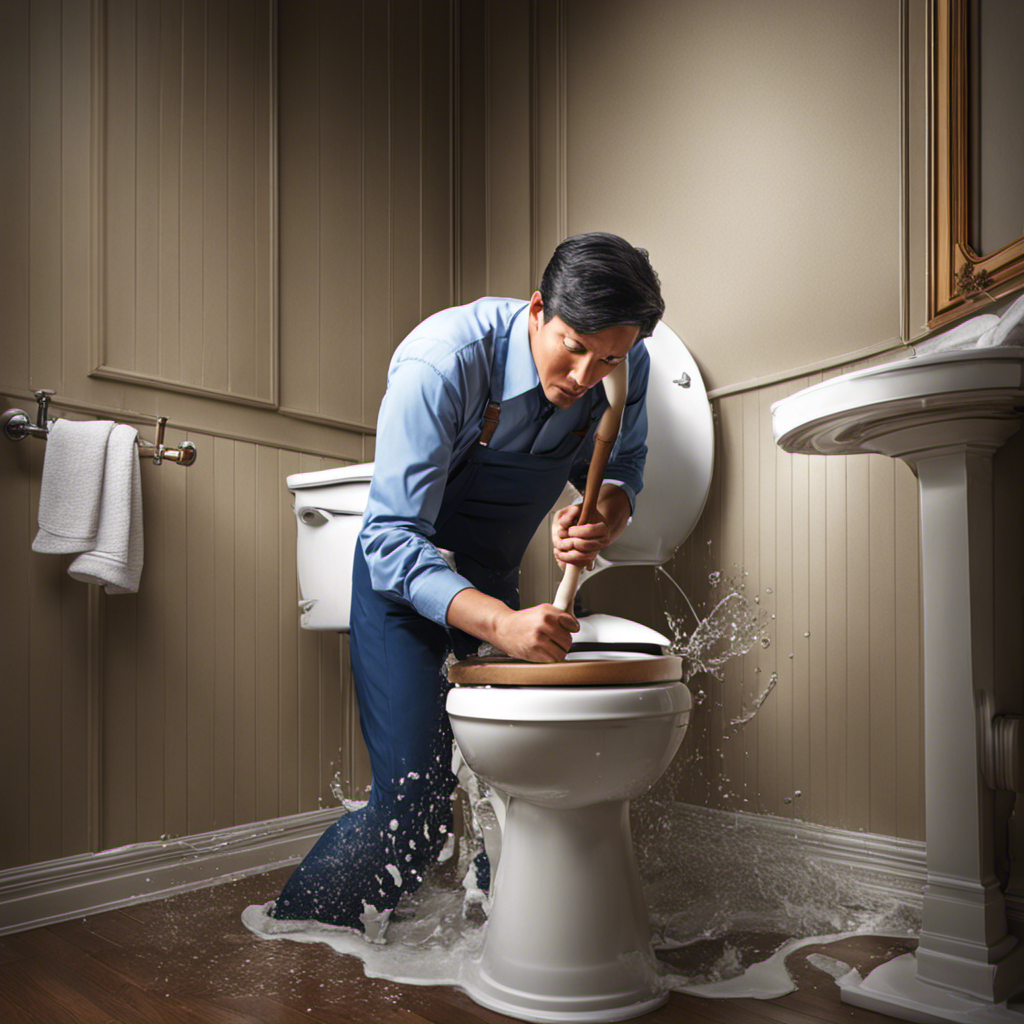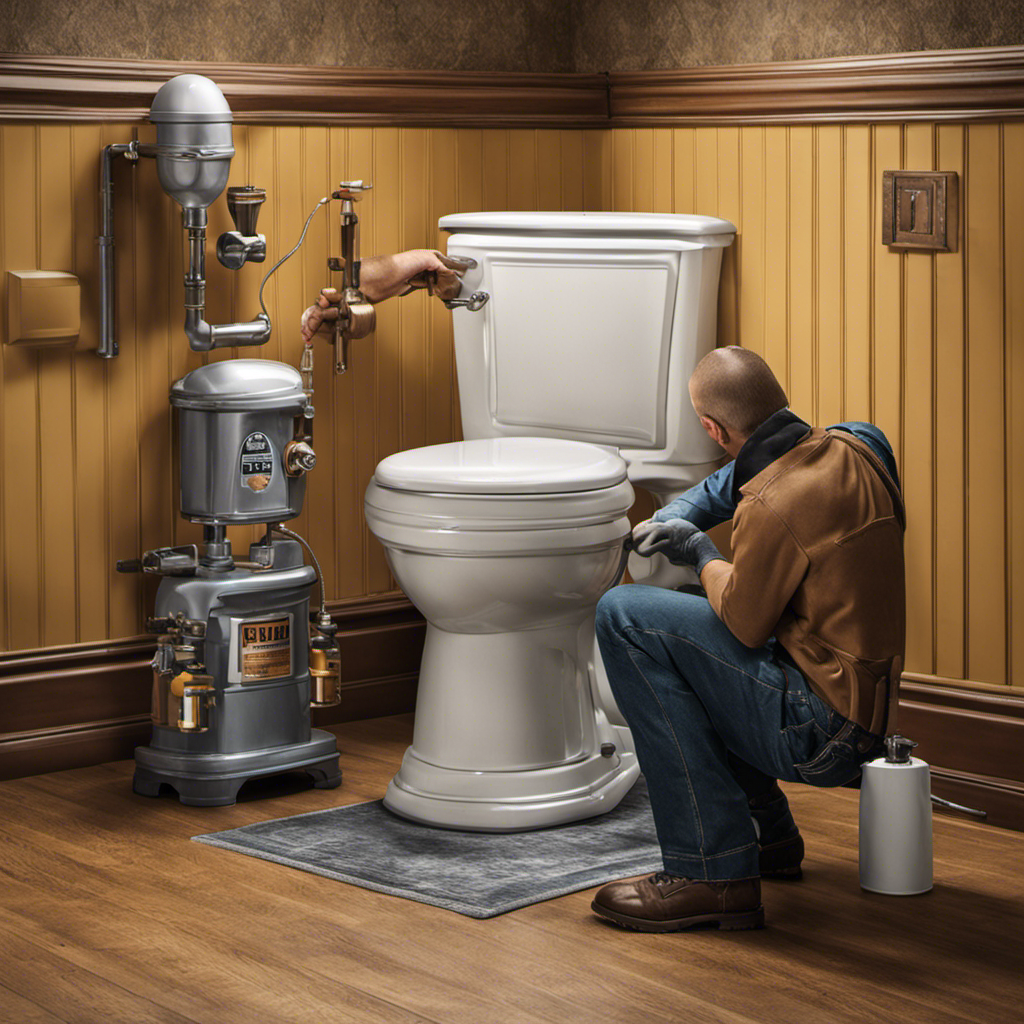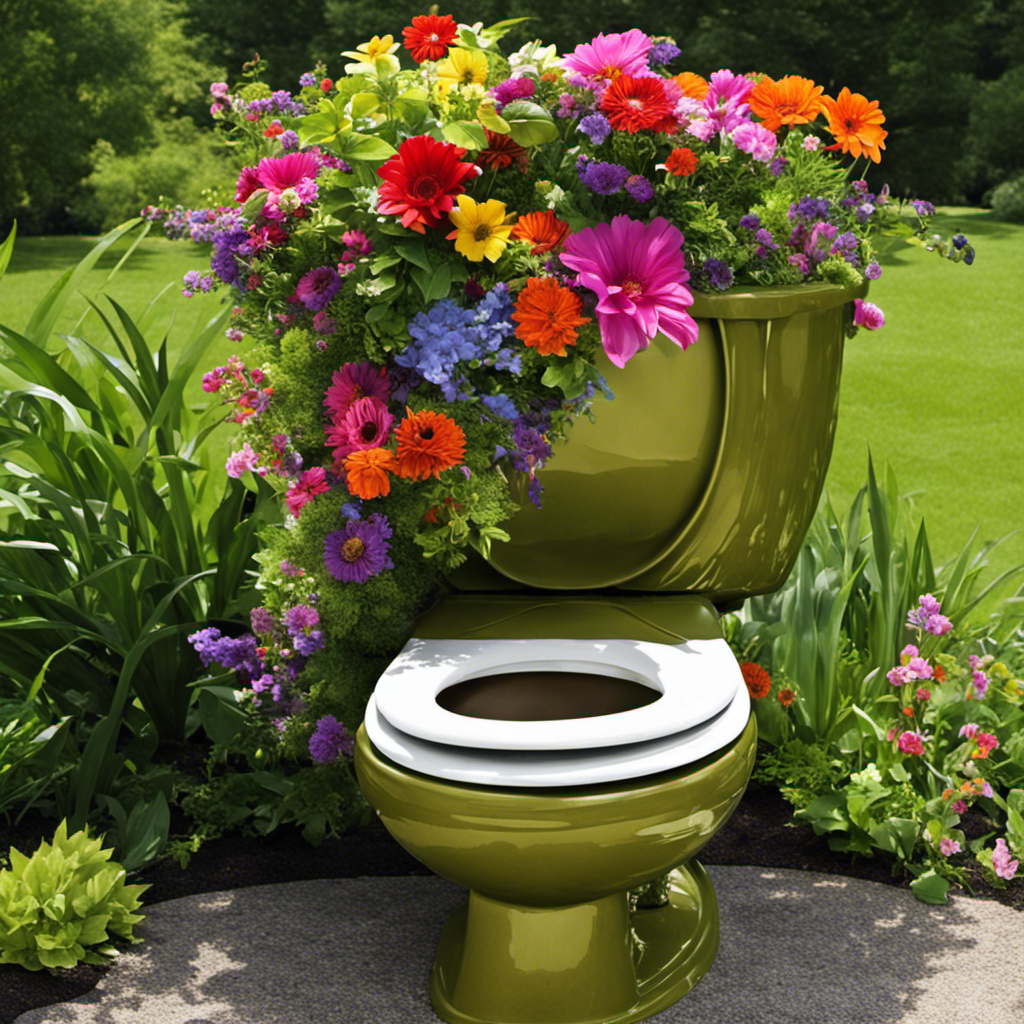As I stared at the stubborn toilet, its refusal to flush seemed like a metaphor for life’s unexpected challenges.
But fear not, for I have discovered the secrets to conquering this common bathroom dilemma. In this article, I will guide you through the steps to fix a toilet that won’t flush.
By identifying the problem, checking the water supply, clearing blockages, and adjusting the flapper or fill valve, you’ll regain control over your porcelain throne in no time.
Let’s dive in and become masters of the flush!
Key Takeaways
- Check for water in the tank and ensure the water supply valve is fully open.
- Inspect the flapper valve and chain for damage or misalignment.
- Troubleshoot water supply issues by checking pressure and clearing blockages.
- Adjust or replace the flapper and fill valve if necessary.
Identifying the Problem
First, let’s figure out why the toilet won’t flush.
When it comes to common toilet flushing issues, there are a few troubleshooting steps you can take to identify the problem.
Firstly, check if there is any water in the tank. If not, it could be a problem with the water supply valve or the fill valve. Ensure that these valves are fully open and functioning properly.
If there is water in the tank but it’s not flushing, the issue might be with the flapper valve. Inspect the flapper for any signs of damage or misalignment. Additionally, check the chain connected to the flapper, as it might be too loose or too tight.
Checking the Water Supply
To ensure proper flushing, you’ll want to start by checking if there’s enough water supply. Troubleshooting water pressure issues and checking for clogged pipes are essential steps in fixing a toilet that won’t flush. Here’s a practical guide to help you identify and resolve these problems.
First, let’s address water pressure. Inadequate water pressure can prevent the toilet from flushing properly. To check the water pressure, use a pressure gauge and compare the reading to the recommended range. If the pressure is too low, you may need to adjust the water pressure regulator or contact a professional plumber.
Next, let’s tackle clogged pipes. A clog in the toilet’s drainage system can also cause flushing problems. Here’s a helpful table to assist you in troubleshooting and clearing clogged pipes:
| Issue | Solution |
|---|---|
| Slow flushing | Use a plunger to clear the clog |
| Complete blockage | Try using a toilet auger or snake |
| Gurgling sounds | Check for vent pipe blockages |
| Water backup or overflow | Contact a professional plumber |
| Multiple clogged toilets | Check the main sewer line for clogs |
Clearing the Blockage
Now, let’s focus on how you can clear the blockage in your toilet’s drainage system.
When it comes to unclogging a toilet, there are a few effective methods you can try.
One option is to use a plunger, which is a common tool for this task. Simply place the plunger over the drain hole, ensuring a tight seal, and then push and pull vigorously to create suction and dislodge the clog.
Another method is using a toilet auger, also known as a plumbing snake. This tool is inserted into the drain and can break up and remove stubborn blockages.
It’s important to remember that regular toilet maintenance is key to preventing clogs. Avoid flushing excessive amounts of toilet paper or other items that can easily get stuck.
Additionally, periodic cleaning and using enzyme-based cleaners can help keep your toilet’s drainage system clear and functioning properly.
Adjusting the Flapper or Fill Valve
To adjust the flapper or fill valve, you’ll need to locate the water supply valve behind the toilet. This is an essential step in troubleshooting common issues with a toilet that won’t flush.
The flapper is responsible for releasing water from the tank into the bowl, while the fill valve controls the water level in the tank. If your toilet is not flushing properly, it could be due to a worn-out flapper or a faulty fill valve.
To replace these parts, first, turn off the water supply valve. Then, remove the old flapper or fill valve and install the new one according to the manufacturer’s instructions. This simple adjustment can often resolve flushing problems.
However, if the issue persists, it may be time to seek professional help.
Seeking Professional Help if Needed
If you’re still experiencing issues, it might be a good idea to contact a professional for assistance. While there are many DIY troubleshooting techniques for fixing a toilet that won’t flush, sometimes the problem may require expert knowledge and tools.
Before calling a professional, you can try a few cost-effective alternatives to see if they solve the issue. Here are some options to consider:
- Check the water supply: Ensure the water valve supplying the toilet is fully open.
- Inspect the flapper: Make sure the flapper is properly sealed and not obstructed by any debris.
- Adjust the chain: If the chain connecting the flapper to the flush handle is too loose or too tight, it can cause flushing problems.
- Replace the flapper: If the flapper is worn out or damaged, it may need to be replaced.
Frequently Asked Questions
How Can I Prevent My Toilet From Getting Clogged in the First Place?
To prevent my toilet from getting clogged in the first place, I can be mindful of what I flush down. Avoiding items that can cause clogs and using gentle flushing techniques can help maintain a clog-free toilet.
Can I Use Chemical Drain Cleaners to Clear a Toilet Blockage?
I wouldn’t recommend using chemical drain cleaners to clear a toilet blockage. Instead, try using a plunger for toilet blockages or consider alternative methods. Chemicals can be harsh on your plumbing and cause more damage.
Why Does My Toilet Make a Gurgling Sound After Flushing?
When a toilet gurgles after flushing, it’s like a symphony of plumbing problems. The causes can range from a clogged vent pipe to a malfunctioning fill valve. Troubleshooting involves checking for blockages and examining the fill valve mechanism.
How Do I Fix a Weak Flush in My Toilet?
To fix a weak flush in my toilet, I would start by checking the water pressure in the toilet tank. Sometimes, low water pressure can cause a weak flush.
What Should I Do if My Toilet Keeps Running After Flushing?
When my toilet kept running after flushing, I researched the issue. Turns out, it was a faulty flapper valve causing the problem. Replacing it solved the toilet flush problem and saved water.
Conclusion
In conclusion, fixing a toilet that won’t flush can be a frustrating yet manageable task. By identifying the problem, checking the water supply, clearing any blockages, and adjusting the flapper or fill valve, you can usually resolve the issue on your own.
However, if all else fails, don’t hesitate to seek professional help.
Interestingly, did you know that a single flush of a standard toilet uses about 1.6 gallons of water? That’s enough to fill a medium-sized fish tank or flush a basketball down the drain!
Remember, with a little knowledge and some practical steps, you can get your toilet flushing smoothly again in no time.










